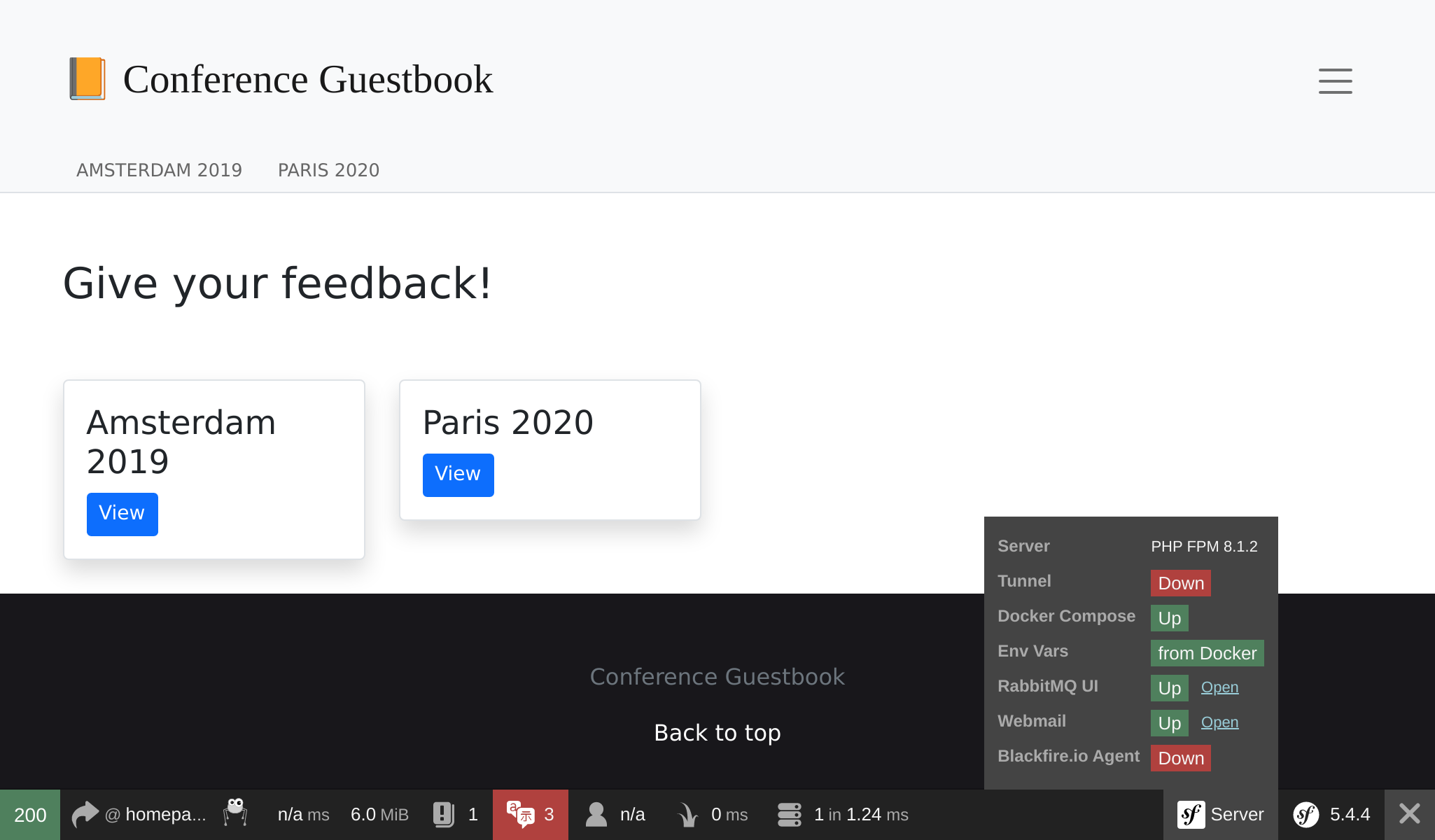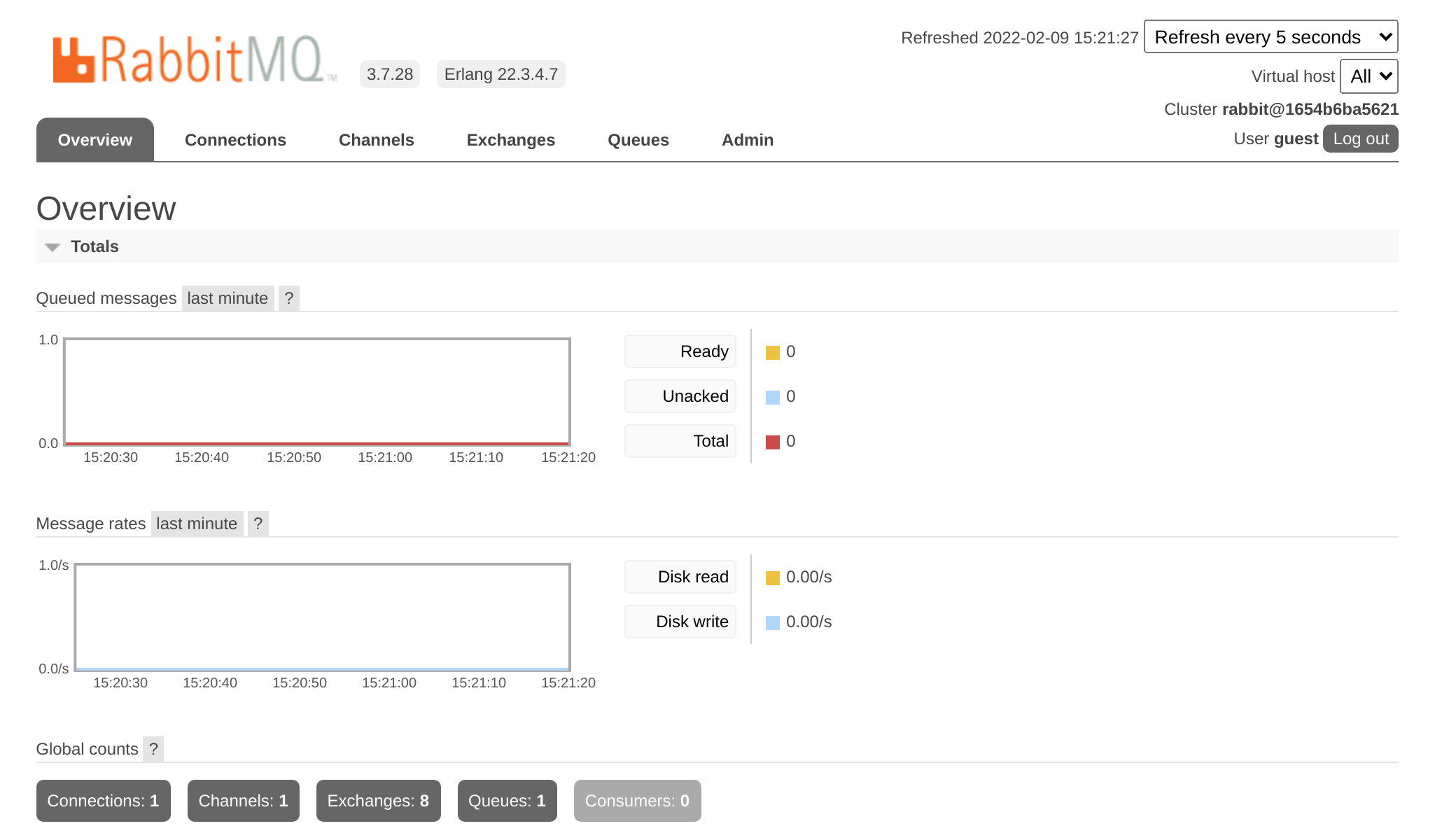Usare RabbitMQ come Message Broker
RabbitMQ è un message broker molto popolare che può essere utilizzato come alternativa a PostgreSQL.
Passare da PostgreSQL a RabbitMQ
Per utilizzare RabbitMQ al posto di PostgreSQL come message broker:
1 2 3 4 5 6 7 8 9 10 11 12 13 14
--- a/config/packages/messenger.yaml
+++ b/config/packages/messenger.yaml
@@ -5,10 +5,7 @@ framework:
transports:
# https://symfony.com/doc/current/messenger.html#transport-configuration
async:
- dsn: '%env(MESSENGER_TRANSPORT_DSN)%'
- options:
- use_notify: true
- check_delayed_interval: 60000
+ dsn: '%env(RABBITMQ_URL)%'
retry_strategy:
max_retries: 3
multiplier: 2Abbiamo anche bisogno di aggiungere il supporto RabbitMQ per Messenger:
1
$ symfony composer req amqp-messengerAggiungere RabbitMQ allo stack Docker
Come potreste aver intuito, abbiamo bisogno di aggiungere RabbitMQ allo stack di Docker Compose:
1 2 3 4 5 6 7 8 9 10 11 12 13
--- a/docker-compose.yml
+++ b/docker-compose.yml
@@ -19,6 +19,10 @@ services:
image: redis:5-alpine
ports: [6379]
+ rabbitmq:
+ image: rabbitmq:3.7-management
+ ports: [5672, 15672]
+
volumes:
###> doctrine/doctrine-bundle ###
db-data:Riavviare i servizi Docker
Per forzare Docker Compose a prendere in considerazione il container RabbitMQ, fermare i container e riavviarli:
1 2
$ docker-compose stop
$ docker-compose up -dEsplorare l'interfaccia web di gestione di RabbitMQ
Se volete vedere le code e i messaggi che transitano attraverso RabbitMQ, aprite l'interfaccia web di gestione:
1
$ symfony open:local:rabbitmqO dalla barra di debug:

Inserire guest/guest come username e password, per accedere alla UI di gestione di RabbitMQ:

Distribuire RabbitMQ
Aggiungere RabbitMQ ai server di produzione può essere fatto aggiungendolo alla lista dei servizi:
1 2 3 4 5 6 7 8 9 10 11
--- a/.platform/services.yaml
+++ b/.platform/services.yaml
@@ -18,3 +18,8 @@ files:
rediscache:
type: redis:5.0
+
+queue:
+ type: rabbitmq:3.7
+ disk: 1024
+ size: SFare riferimento ad esso anche nella configurazione del container web, ed abilitare l'estensione PHP amqp:
1 2 3 4 5 6 7 8 9 10 11 12 13 14 15 16 17 18
--- a/.platform.app.yaml
+++ b/.platform.app.yaml
@@ -8,6 +8,7 @@ dependencies:
runtime:
extensions:
+ - amqp
- apcu
- blackfire
- ctype
@@ -41,6 +42,7 @@ mounts:
relationships:
database: "database:postgresql"
redis: "rediscache:redis"
+ rabbitmq: "queue:rabbitmq"
hooks:
build: |Quando il servizio RabbitMQ è installato su di un progetto, potete accedere alla sua interfaccia di gestione web aprendo un tunnel:
1 2 3 4 5
$ symfony cloud:tunnel:open
$ symfony open:remote:rabbitmq
# when done
$ symfony cloud:tunnel:close